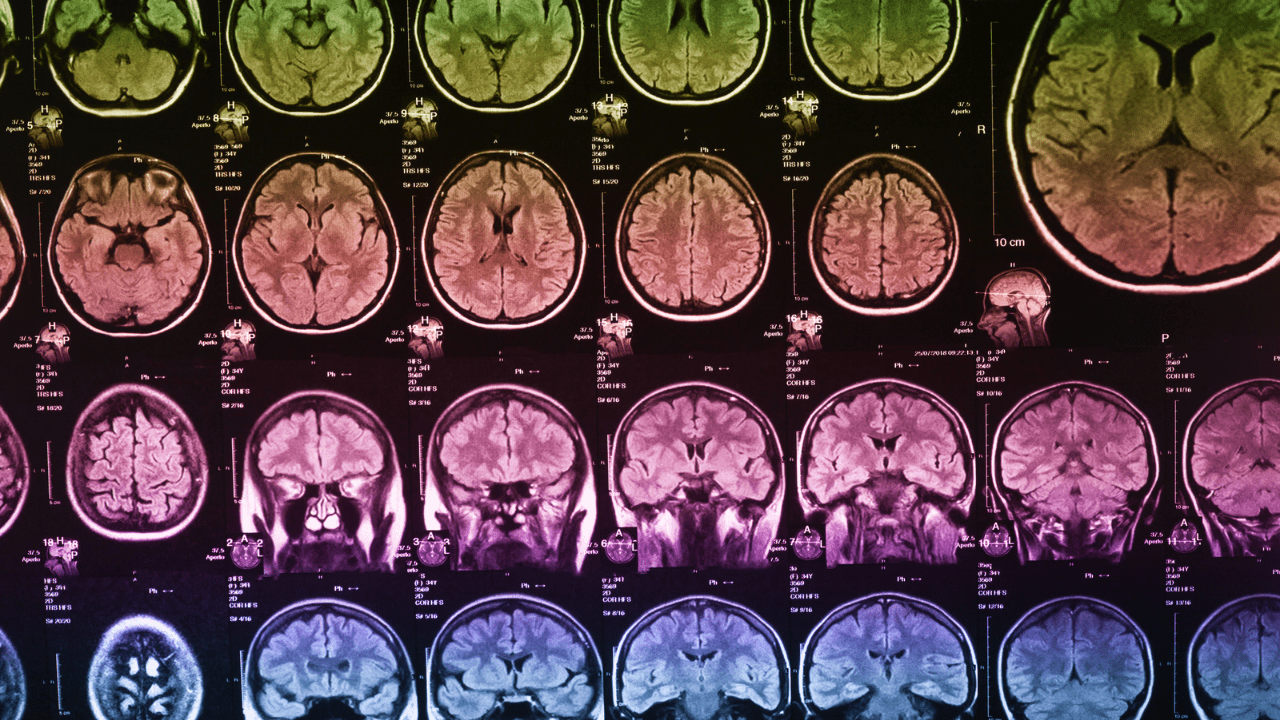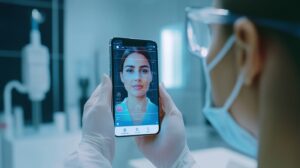
Art Meets Science: Why a Career in Radiologic Technology Could Be Your Perfect Fit
An interview with Melissa Culp, Executive Vice President of Member Engagement at The American Society of Radiologic Technologists (ASRT)
Q: Who is the typical MRI technologist in terms of age, education, and background?
First, I'll take a step back. We're called radiologic technologists, and we're the medical professionals who obtain medical imaging or administer radiation therapy. I am an MRI technologist, certified in radiography, which is x-ray and MRI. MRI uses a big magnet and radio frequency to get an image of the patient.
Now, who are we? It's diverse, spanning from people in their 20s and up. You can become an MRI technologist through different pathways: community college or bachelor's level programs. I came right out of my bachelor's degree and started the very next day, so I was working from my early twenties.
There's no particular "type" of person. We're a diverse range of people. You can be drawn to the science component, the patient care component, or even see it as an art. I've taught students who were artists or liked photography. They were drawn to the field because they found the images beautiful and felt like they were making art that contributed to patient care.
I worked clinically in MRI for the first six years and then became an educator. My favorite was always to image brains. In MRI, you can see soft tissue really well, and the images of the brain are very pretty. You can be drawn to this field for many different reasons: technology, art, or people, as it leverages different aspects of a person.
Q: What are the educational requirements for becoming an MRI technologist in the United States?
The minimum requirement for many radiologic technologists, including MRI technologists, is going to a community college. You'll need to complete some prerequisites, such as basic sciences. There are many associate-level programs here in the United States, which serve as the minimum entryway into the profession. These programs are a cost-effective and affordable option.
I went through a bachelor's program. I knew I wanted to be in healthcare, so I chose this field. In the program, you follow a curriculum that covers patient care, anatomy and physiology, communication, and physics. For MRI, it's about understanding the physics of the magnet and radio frequency, and safety around that. We have to know how to be safe in that space for ourselves, for our patients, for their family members, and for other healthcare professionals.
After finishing your degree, you take a national exam to get certified and registered. Different states have their own laws, but generally, you'd expect to take this national exam. Once certified, you practice clinically and do continuing education every two years to keep up with the field.
Q: Salary is a big concern for many, especially young people. The Bureau of Labor Statistics states that the average salary for a radiologic technologist is about $80K as of 2022. How accurate is this in your experience?
I'd say that's a pretty accurate figure, although it can vary based on where you live and the specific area of radiology you work in—like X-ray, CT, or MRI. The American Society of Radiologic Technologists collects wage data, and our findings align with the BLS numbers. You'll usually start on the lower end of the pay scale and see your salary grow as you gain experience and take into account the cost of living in your area.
Q: What are your thoughts on the future of this career, especially with technological advancements and AI? Do you think this field will be around in the next 10-20 years?
If you're looking at my role as a clinical MRI technologist, it involves multiple parts. First, there's the patient aspect. I'm dealing with a physical person, helping them get ready for the MRI, meeting their emotional needs, and focusing on their health. That human element isn't going anywhere.
Second, MRI and all imaging modalities come with a safety component. MRI uses a powerful magnet, and we have zones of safety. Part of my job is to screen the patient, asking questions like, "Have you had any surgeries? Is there any metal in your body? Are you a welder?" Sometimes people fill out a form and forget things. For example, I might ask you, “I see you haven’t had any surgeries," and you might suddenly remember, "Oh, I did have one minor surgery." Then we would need to discuss that to ensure it's safe to proceed.
AI can certainly help streamline some of the workflow and technological aspects, but it can't replace the human part of the role. You need someone there with the patient, coordinating with the medical team for ongoing care.
So yes, I believe this job will be secure for the next 20 years. The elements that require a human, such as patient care and strict safety measures, aren't going away, especially considering the high level of safety needed. People can actually die if the magnet safety protocols aren't followed. So we need a well-educated person there to focus on these serious safety procedures.
Q: What is the typical career path for a radiologic technologist? Do people generally stay in the field for a long time, or do they move on to other medical roles?
There are many paths you can take, which is a fun part of this career. You might start in your 20s or even switch to this career later in life. Once you're working in clinical imaging, you have different ways to move up. Some hospitals or imaging centers have career ladders. You could become a lead technologist or move up to roles like team leader or chief technologist, which are more administrative.
In my case, I moved into education and did some work in global health and health equity. So my path has been a bit different.
You can also start with just one credential. For example, I have credentials in X-ray and MRI. You can keep gaining more credentials and work in different imaging modalities like CT scans.
Another path is becoming a radiologist assistant. This is an advanced role that lets you help radiologists in special ways. You still won't read and interpret images, but you'll do more advanced tasks. This role requires a master's level certification.
So there's not just one way to go. You have many options, which makes this field exciting.
Q: According to the Bureau of Labor Statistics, the expected growth rate for radiologic technologists is 6% over the next decade, a bit faster than average. What are you seeing on your end? Is this accurate? Are there lots of job openings? Is there a shortage of technologists right now?
Yes, I think we'll see growth, especially after the pandemic. Many health professions, not just ours, are experiencing some workforce shortages. We, at ASRT, are working with other groups in radiology to figure out why there are shortages and how we can help our members through it. As the population gets older, and as the population grows, there will be more need for imaging. So it's important that our technologists are supported for safe practice.
One thing ASRT does is advocacy. We keep an eye on laws at both the federal and state levels to make sure our members are supported. Right now, we're putting together a committee to look at the future of medical imaging and radiation therapy. This will help us plan for growth and keep advocating for our profession.
Q: What challenges is the radiologic technologist profession facing?
One challenge we face is the aftermath of the pandemic. We're in a period of growth and need more healthcare professionals. We have to make sure our workforce is supported to practice safely. For MRI, you can't just have one person with the magnet. If something goes wrong and you have to call a code, the code team can't go into the magnet room. You need to move the patient to a safe zone, so more than one person is needed.
Another aspect is communication with other professional associations and public awareness. The ASRT is leading initiatives to spread awareness about our role as radiologic technologists, which is the third largest healthcare profession. As of September 1, the American Registry of Radiologic Technologists, the largest credentialing body, has more than 352,000 registered radiologic technologists. We're focusing on communicating with other medical groups and the general public about what we do to continue advocating for the profession.
Q: How much influence does ASRT have on imaging centers?
We set practice standards at ASRT. We work with volunteers who are experts in each modality to establish what the best practices should be. But it's important to note that state laws and institutional policies also play a role in actual practice.
We also do advocacy work. We have a department focused on government relations that keeps an eye on federal and state bills that could affect us. We work with representatives and help our members at the state level to advocate for best practices. So while we set guidelines, states and individual institutions have the final say in what happens at the imaging centers.
Q: What advice would you give to high school or college students who are considering a career in healthcare but might not know about the field of radiologic technology or are comparing it to other healthcare professions?
If this all sounds interesting, I'd say head over to our website, asrt.org. We've got videos there, like one series called Radcademy that talks about physics and the profession. There's also another video, R.T. 101, that goes through each kind of imaging type. Checking out these resources can help you make an informed decision.
And just think more broadly about what's out there. When I was in high school, TV shows made it seem like there were only doctors and nurses doing everything in a hospital, which isn't accurate. There are many other healthcare professions, so being aware of that and then looking into different things would be my advice. Our member services department takes questions from anyone; you don't have to be a member. If you're a student and want to learn more, you can call or email us.
- Phone: 800-444-2778, 7:30 a.m. to 4:30 p.m. Mountain time, Monday-Friday
- Email: memberservices@asrt.org
Q: If I'm a certified radiologic technologist in Colorado and I want to move to New Jersey, would I need to get recertified in New Jersey?
We have a page on our website that tells you what the licensure and certification requirements are for each state. Depending on the state, your certification could transfer easily, but some states might have their own exam. You can check out this resource on our website to be prepared for your move.










